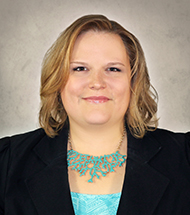Customized PDPM Consulting Services
Success under PDPM is mostly about mindset. Our engaging PDPM Booster Training and auditing are designed to propel your team’s approach under PDPM, creating a team of PDPM Super Soldiers. Our mobile unit of PDPM Commanders is available to come to your campus or corporate office. Improve your PDPM success with Gravity Healthcare Consulting to achieve optimal accuracy with per diem rates!
Analyze
Our PDPM experts can scour your MDSs for accuracy, supportive documentation, and potential risk under the new payment model.
Comply
Our PDPM experts can review relevant policies & procedures, highlighting key changes and recommendations for your organization.
Optimize
Our proprietary audit tool will help you achieve accurate reimbursement and identify missed opportunities.
Ready to learn more?
Reach out to Melissa Brown for a quote and to discuss your PDPM strategy!
CALL DIRECT: 240.803.7999

Training to keep your team at the top of the pack.
PDPM Booster Training! PDPM Booster Training for executives, corporate management, and the IDT (interdisciplinary team), including interactive sessions, training materials, and several PDPM forms.
PDPM 2.0 – Gain a stronger understanding of the critical elements of the PDPM system and how the system is structured. Discussions will focus on high level, as well as daily care level strategies for success, including recent updates from CMS.
Section GG: The Cornerstone of Per Diem – Be prepared as Section GG takes over Section G as the cornerstone for nursing, PT and OT reimbursement. Find out how to correctly complete Section GG coding and test your skills during interactive breakout sessions.
ICD-10 For PDPM – Learn the strategies behind selecting the correct ICD-10 code, along with common pitfalls and the methodology used to designate various codes to different PDPM reimbursement categories.
Your Turn to Try PDPM – In this engaging, interactive session, participants will be divided into groups to simulate a team meeting to discuss the resident and score them on PDPM. The winning team will be the first to determine the correct per diem rates and 5 CMG scores.
IPAs: The Difference Maker in PDPM – Learn how Interim Payment Assessments (IPAs) are used strategically throughout the resident’s skilled stay to accurately reflect the services provided and the clinical indicators for residents. Participants will review examples of the impact of reimbursement through IPAs, as well as best clinical practices. Interactive teams will be formed and given a sample 24-hour report to decide whether an IPA should be completed.
Restore Your Per Diem Rate with Restorative – Discover the new impact of Restorative Nursing Programs for skilled residents under PDPM. You will learn key components of correct RNP documentation and scheduling to be able to capture it on the MDS.
Stretch your understanding! Advance beyond basic training towards a higher-level grasp of the new payment model.
PDPM Triple Check – Gain a stronger understanding of the critical elements of the PDPM system. Discussions will focus on high level, as well as daily care level strategies for success, including recent updates from CMS.
PDPM and Compliance – Avoid the CMS compliance pitfalls hiding in the new payment system and discover key compliance items that could be tied to quality measures, denials or CMS targets under PDPM.
High Intensity Team Training Teaching PDPM Skills with our intensive and interactive PDPM bootcamp modules.
Section GG: The Cornerstone of Per Diem Reimbursement – Be prepared as Section GG takes over Section G as the cornerstone for nursing, PT and OT reimbursement. Find out how to correctly complete Section GG coding and test your skills during interactive breakout sessions.
Your Turn to Try PDPM – In this engaging, interactive session, participants will be divided into groups to simulate a team meeting to discuss the resident and score them on PDPM. The winning team will be the first to determine the correct per diem rate and 3 sets of RUG/CMG scores.
Drill with your team to evaluate your team’s readiness for PDPM.
Everybody Stand Up for PDPM– Hone your morning “Stand Up” meeting process to align with the new key metrics under PDPM. Our team of experts will show you how to reinvigorate your process by increasing accuracy under PDPM.
Run through real patient simulations to determine payment in PDPM.
IPAs: The Difference Maker in PDPM – Learn how Interim Payment Assessments (IPAs) are used strategically throughout the resident’s skilled stay to accurately reflect the services provided and the clinical indicators for residents. Participants will review examples of the impact of reimbursement through IPAs, as well as best clinical practices. Interactive teams will be formed and given a sample 24-hour report to decide whether an IPA should be completed.
Target your team’s approach to achieve success as super soldiers under PDPM.
Restore Your Per Diem Rate with Restorative – Discover the new impact of Restorative Nursing Programs for skilled residents under PDPM. You will learn key components of correct RNP documentation and scheduling to be able to capture it on the MDS.
FREE PDPM Online Webinars
Everybody STAND UP for PDPM!
Our PDPM Expert, Melissa Brown, discusses the new role that Stand Up meetings will take under the Patient Driven Payment Model (PDPM). Reimagine your Stand Up process to better align with following the key metrics that impact payment, accuracy, compliance and documentation requirements under PDPM.
Don’t wait until October to address these new items – learn how you can prepare your team today and be PDPM-ready in October.
PDPM NTA: Points = Revenue
Understanding how these NTA points are determined and their impact on payment will be critical under PDPM. Currently, nursing and non-therapy ancillary (NTA) costs under RUGS IV are combined together under the nursing component. Because the nursing component does not adequately address variations in NTA costs, CMS separated them out under PDPM and established a new NTA category with its own per diem rate.
A change in the NTA score enough to change the per diem rate can trigger an IPA, or Interim Payment Assessment.
Learn how your community can prepare for PDPM by focusing on NTA items and proactively planning IPAs to capture them. View the webinar today at the link below!
PDPM Strategy Discussion: Providing Quality Care and Thriving Under the New Payment Model
As providers prepare for the upcoming transition to the Patient Driven Payment Model, or PDPM, several questions arise about how to effectively manage the provision of services under the new structure. Compliance, quality measures and functional outcomes still remain the essential focus of all providers, regardless of the payment model. Because PDPM changes the structure of the payment system and redistributes the reimbursement across the patient characteristics, providers need to better understand the strategies for successfully transitioning into the new model. This webinar will focus on a higher-level strategy discussion about the opportunities to improve care provision under the new model to meet and exceed the quality goals and initiatives of each community, while receiving the most accurate reimbursement in alignment with the services provided. Participants should come prepared with a basic understanding of the new payment model.
Analysis and Understanding of PDPM – The Patient Driven Payment Model
- Review several analyses of specific resident cases and how they compare with reimbursement between RUGS IV and PDPM.
- Learn how you and your team should be training and transitioning now to be prepared for the shift to PDPM, this entirely new Prospective Payment System for all Medicare beneficiaries.
- Gravity has been completing PDPM Financial Analyses for multiple customers – hear what we have learned and how it may apply to you.
While the PDPM model shares some similarities with RCS –1 it is vastly different from the current RUGS IV system and it is truly a paradigm shift in the health care sector. PDPM is scheduled to take effect in October of 2019, however, understanding the system now is critical so that you and your team can prepare and advocate.
Become the first of your colleagues to grasp a comprehensive understanding of PDPM and how it will affect your community’s reimbursement through our training and support.
FREE PDPM Whitepapers
“WOUNDS: A Hidden Gem For Reimbursement Under PDPM”
“…there are many questions surrounding effective and efficient operations and delivery of care under the new model. With so many aspects of the payment structure shifting significantly, providers need to consider new targets other than therapy minutes to achieve appropriate and adequate reimbursement. While CMS has ….”
“The Super Heroes of PDPM”
“…Although we do not often see MDS Coordinators working in our nursing communities wearing capes, they are going to be the secret superheroes of each community under PDPM. The complex new system, with separate RUGs and per diem rates for Nursing, Non-Therapy Ancillary, Physical Therapy, Occupational Therapy, and Speech Therapy, will require that MDS Coordinators are more proactive than ever. CMS has stated that the reduced number of MDS assessments required under PDPM should reduce MDS-related annual administrative costs by $12,000 on average per facility. However, the reality is that…”
“Patient Driven Payment Model (PDPM): Why Restorative Matters for SKILLED Residents”
“…Restorative Nursing Programs are moving to the forefront under the Patient Driven Payment Model, or PDPM, especially for skilled residents. Under PDPM, providers will be able to capture reimbursement for approximately half of skilled residents if restorative nursing is captured on the MDS. It will be vital for facilities to implement…”
“PDPM Financial Analysis A Financial Analysis: Therapy Armageddon or Therapy Freedom?”
“…while PDPM shows many improvements over what was believed to be “Therapy Armageddon” in RCS-1, there are still many concerns in the therapy and skilled nursing world about what PDPM means for the future. With a significantly altered reimbursement structure for therapy services, many providers have considered drastic cuts in the amount of therapy services they intend to provide under PDPM. Furthermore, with CMS focused on a …”
“Section GG & PDPM (Patient-Driven Payment Model): A Financial Analysis”
“…In response to provider comments and concerns that the Resident Classification System (RCS-1) was too complex, CMS requested that Acumen reexamine the number and complexity of the proposed RUG scores. Acumen reviewed their own research and determined that when they substituted Section GG for Section G, they could remove cognition as a factor for PT and OT RUG scores because the Section GG scoring more accurately aligned with costs regardless of cognition. Thus, the PT and OT…”
“Patient Driven Payment Model (PDPM) and the MDS: A Total Evolution of the SNF Payment Model”
“…Transparency and communication across all healthcare systems has also been an area of concentration for CMS, as it continues to re-construct payment models throughout the healthcare spectrum. Current attention for CMS has been on evolving the Skilled Nursing Facilities (SNF) Prospective Payment System (PPS) that has included research and review of…”
